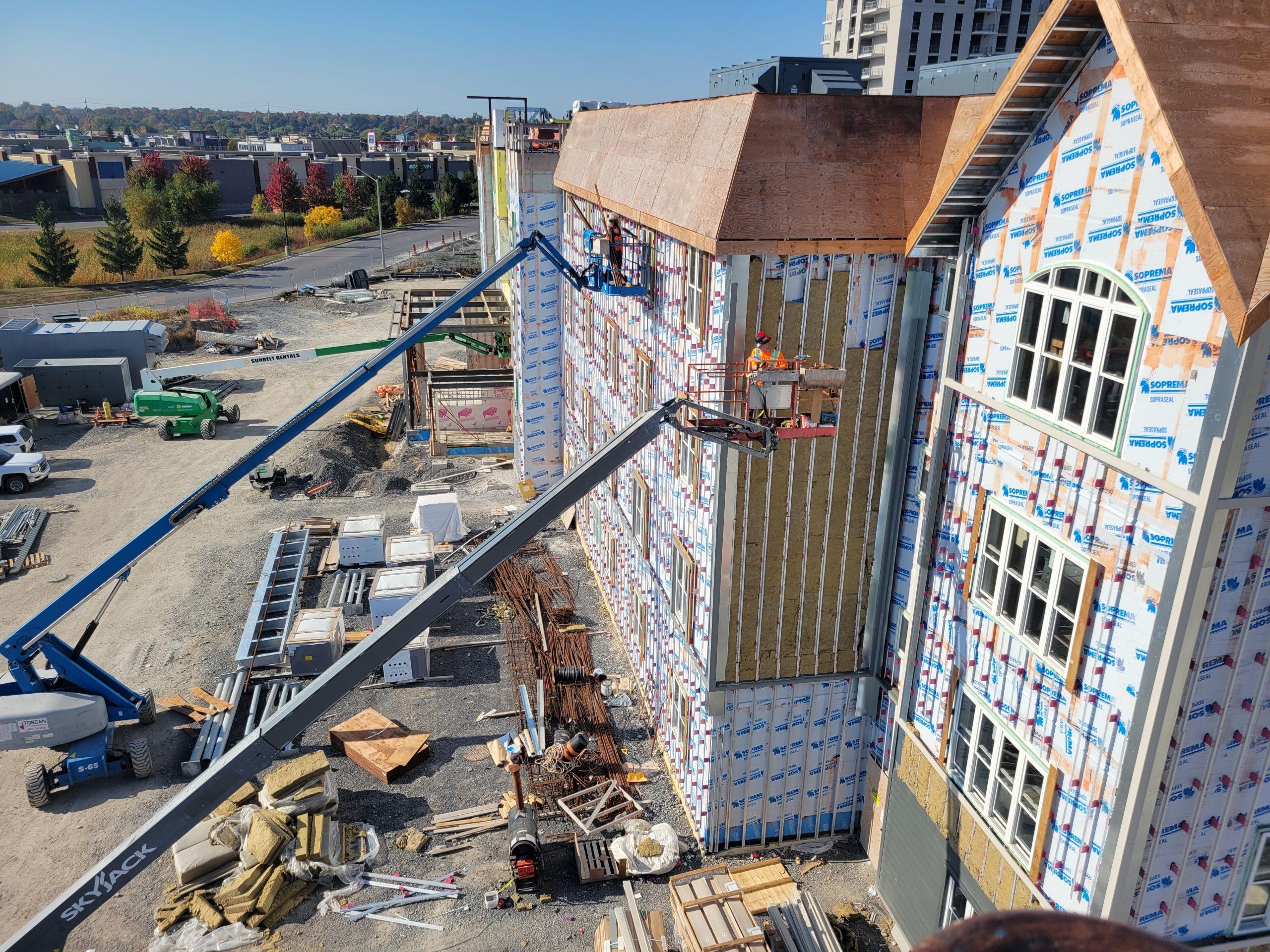The Importance of Thermal Breaks in Wall Systems: A Key to Efficient and Comfortable Buildings
When it comes to constructing energy-efficient and comfortable buildings, one often overlooked but crucial component is the use of thermal breaks in wall systems. Especially in climates with extreme temperature variations, like Kingston, integrating thermal breaks into wall systems for both residential and commercial siding projects can lead to significant energy savings, reduce environmental impact, and improve indoor comfort.
What is a Thermal Break?
A thermal break is essentially a layer of insulating material that is integrated into wall systems to prevent conductive heat transfer between the inside and outside of a building. In wall systems, thermal breaks act as a barrier, reducing the amount of heat that passes through the building envelope. They are especially important in materials like metal, which are highly conductive and, without insulation, would facilitate significant heat transfer.
Why are Thermal Breaks Important in Wall Systems?
- Enhanced Energy Efficiency
Thermal breaks are essential in minimizing heat loss during winter and reducing heat gain during summer. By creating a barrier within the wall system, thermal breaks help maintain a stable internal temperature, which reduces the reliance on HVAC systems. This energy efficiency is particularly relevant in areas with varying temperatures, like Kingston, where efficient heating and cooling are crucial to comfort and cost savings. - Lower Operational Costs
With the reduced need for heating and cooling, buildings with effective thermal breaks see a noticeable reduction in energy bills. The upfront cost of installing thermal breaks is offset by long-term savings. For commercial siding projects, where operating costs can be significant, this reduction in energy use can be a key selling point and contribute to a lower environmental footprint. - Improved Indoor Comfort
Thermal breaks not only help control indoor temperatures but also contribute to a more consistent and comfortable environment. Without thermal breaks, exterior walls may become cold in winter and hot in summer, leading to uneven temperatures and discomfort for building occupants. Thermal breaks create a more uniform indoor climate, crucial for commercial spaces that need to provide a comfortable environment for employees and customers. - Enhanced Building Durability
Thermal breaks reduce condensation within wall systems, which is particularly important in areas like Kingston that experience seasonal humidity. Condensation can lead to mold growth, corrosion, and degradation of building materials over time. By controlling heat transfer, thermal breaks help maintain the integrity of the building envelope, prolonging the lifespan of both the structure and the siding materials. - Environmental Benefits
As energy efficiency becomes a key concern for builders and consumers alike, thermal breaks contribute to sustainability goals. By reducing a building’s energy consumption, thermal breaks indirectly reduce carbon emissions associated with heating and cooling. For commercial siding projects aiming to achieve green building certifications or meet environmental standards, incorporating thermal breaks is a valuable step toward those goals.
Thermal Breaks and Siding Choices: Kingston Siding and Commercial Siding
Choosing the right siding materials in conjunction with thermal breaks is essential for optimal energy efficiency. Kingston siding options vary widely, from traditional wood and vinyl to more advanced metal and composite materials. Each type of siding has its own insulation properties and, when paired with a thermal break, can enhance a building’s thermal performance. In commercial siding applications, materials such as insulated metal panels are popular for their durability and energy efficiency.
For businesses in Kingston, understanding the advantages of integrating thermal breaks within their chosen commercial siding can make a significant difference in both performance and appeal. In commercial settings, aesthetics, durability, and energy efficiency all play important roles in material selection, and thermal breaks can complement these needs by enhancing insulation without compromising on the exterior look.
Conclusion
The inclusion of thermal breaks in wall systems is a smart investment for anyone looking to improve building performance, comfort, and energy efficiency. With Kingston’s climate requiring effective heating and cooling solutions, thermal breaks combined with the right siding material create a robust wall system that offers both economic and environmental benefits. As energy efficiency standards and consumer demand for sustainable solutions continue to rise, the role of thermal breaks in both residential and commercial siding projects is more important than ever.
